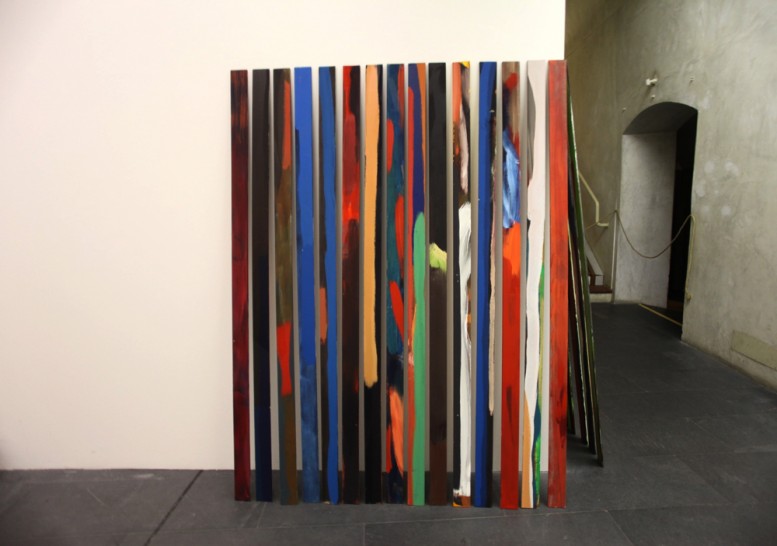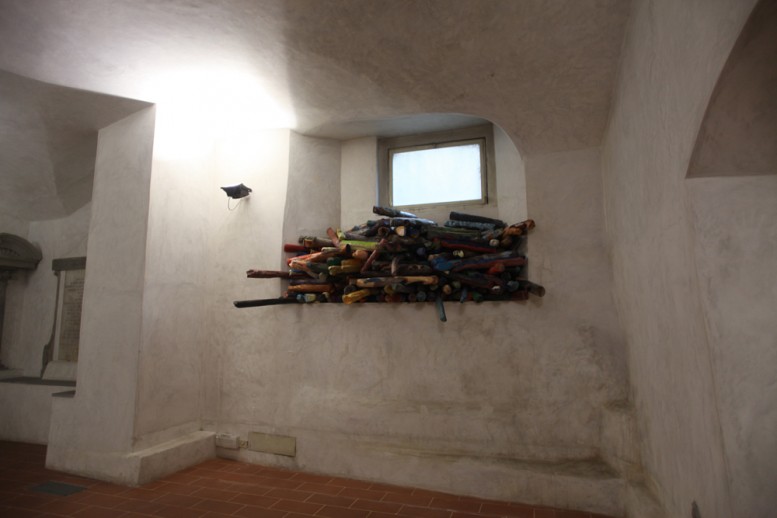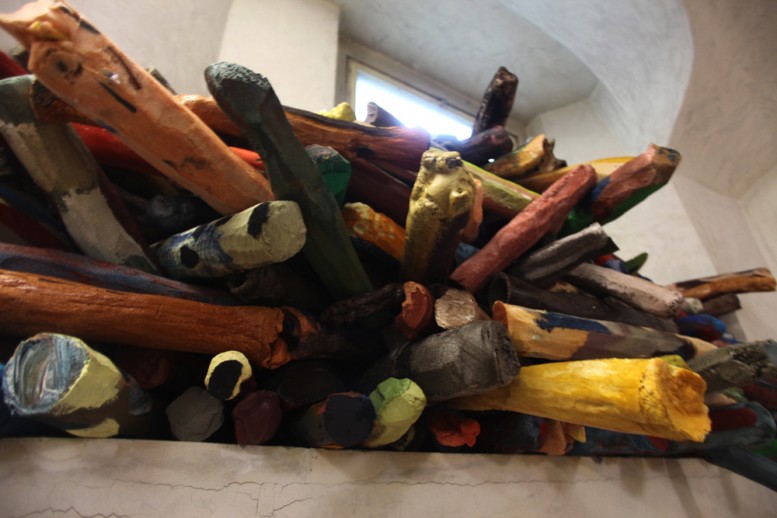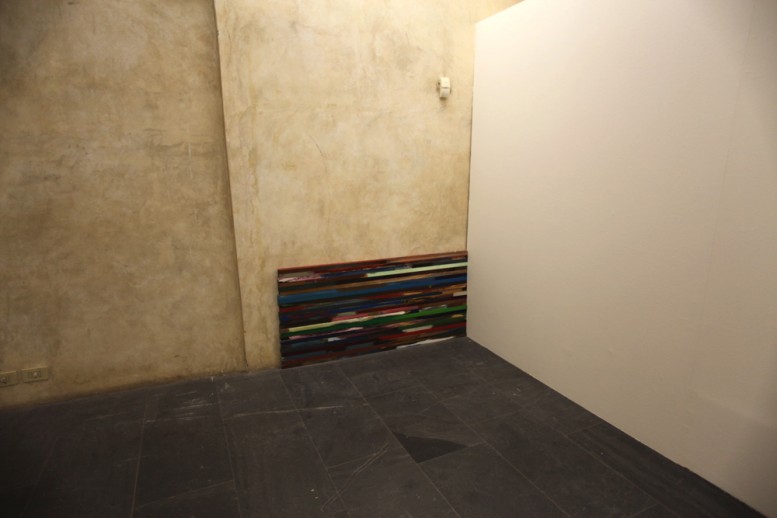Thin, uniform slabs of painted wood lean against the corners of Museo Marino Marini's Sacello (underground Chapel). Splotches of vibrant and saturated colors betray the skill of a lackadaisical fence painter who couldn't be bothered to finish his work. Or maybe he decided to import his leftovers. Applications of paint have been built up in layers and each fragment stands on its own as a sliver of a painting, each hinting at their individual grand potential. At eye level, a section laid diagonally between two walls blocks passage and demands attention. The impressions of paint create an interchangeable visual rhythm. Though immobile, the slabs emanate stoicism in their collective involvement: "United we stand, divided we fall", they seem to say. In the adjacent altar room where thick polyurethane and wooden branches have been piled up on a windowsill, we're left no choice but to imagine a post-catastrophic world - one where vestiges of culture are kept on hand only for fuel and heating purposes. Unable to afford the luxury of optimism in our time of economic turmoil, where historic buildings have been sold off to banks and museums have shuttered their doors for the lack of resources, Kvas's sculptures map out a desolate landscape. At least we're given the choice to rid ourselves of the remnants or participate in regeneration. Andrea Kvas's Campo, curated by Barbara Casavecchia, will be on view until April 6, 2013 at Museo Marino Marini, Piazza di San Pancrazio, Florence, Italy. Text and photography by Yanyan Huang




